At one point in automotive history, nearly every car on the road had a speaker embedded in the dashboard. If you’ve restored a classic car from the ‘50s, ‘60s, or ‘70s, you’ve probably seen speaker perforations integrated into the dash itself. But if you look at modern vehicles, you’ll notice that dashboard speakers are a thing of the past—or at least, they’ve evolved significantly.
So, why did automakers move away from the original perforated dash design? The answer lies in sound quality, safety, and manufacturing efficiency. Let’s break it down.
1. The Era of Dashboard Speaker Perforations (1950s–1970s)
In the early days of in-car audio, the dashboard was the logical location for a speaker. Many cars had only a single mono speaker, and putting it in the center of the dash meant the sound could be heard relatively evenly throughout the cabin.
To accommodate this, manufacturers simply built perforations directly into the dashboard itself. These punched or molded holes allowed sound to pass through while maintaining a clean, integrated look. It was simple, effective, and in line with the limited technology available at the time.
However, this design came with some serious drawbacks:
- Structural weakness – The perforations were cut directly into the vinyl and foam of the dash pad, creating weak points that made these areas prone to crumbling over time, especially with sun exposure.
- Sound was blocked by objects on the dashboard (such as papers or decorations).
- Dash padding muffled the audio, especially as safety regulations required softer materials.
- Limited sound directionality meant audio clarity wasn’t great, especially as stereo systems became standard.
By the late ‘70s and early ‘80s, perforated dashes were on their way out, replaced by a new design: speaker covers.
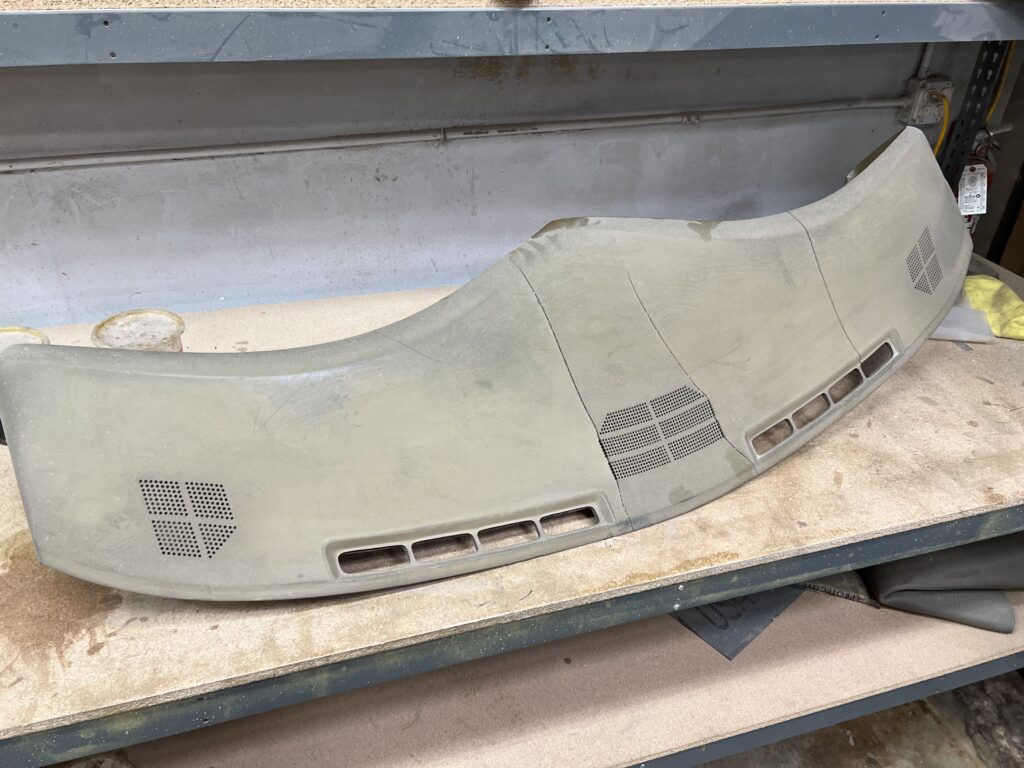
2. The Shift to Speaker Covers (1980s–1990s)
As stereo systems became standard in vehicles, cars needed multiple speakers with better sound projection. The solution? Separate speaker grilles or covers, often located in the same dashboard position but now designed to optimize audio output.
These covers were usually made of plastic, metal, or mesh, allowing for:
- Better sound projection with minimal muffling.
- Easier manufacturing and replacement—no need for specialized dash molds.
- Customization and styling, blending into modern interior designs.
However, the industry was already moving toward a more immersive sound experience, which meant reimagining how speakers were placed and integrated into the vehicle.
3. The Enhancement of Dash Speakers (2000s–Today)
Despite the shift away from basic dashboard-mounted mono speakers, modern dash speakers haven’t disappeared—they’ve been enhanced as part of a larger shift in how people experience audio in their vehicles.
Major audio brands like Bang & Olufsen, JBL, Blaupunkt & Bose, and others began partnering with automakers to transform the car cabin into a premium listening environment. Dash speakers, often part of multi-speaker systems, now contribute to surround sound staging and immersive audio experiences.
Today’s dash speakers are:
- Strategically placed as part of full-cabin audio engineering.
- Integrated with advanced technology, such as digital signal processing and directional tweeters.
- Balanced with speaker systems in doors, pillars, and headliners, offering a richer, fuller sound experience.
- Styled to complement interior design, often with subtle or branded grilles.
Rather than disappearing, the dashboard speaker evolved to meet the demands of high-fidelity in-car entertainment, turning the vehicle into a true music listening space.
What Just Dashes Does About Speaker Perforations
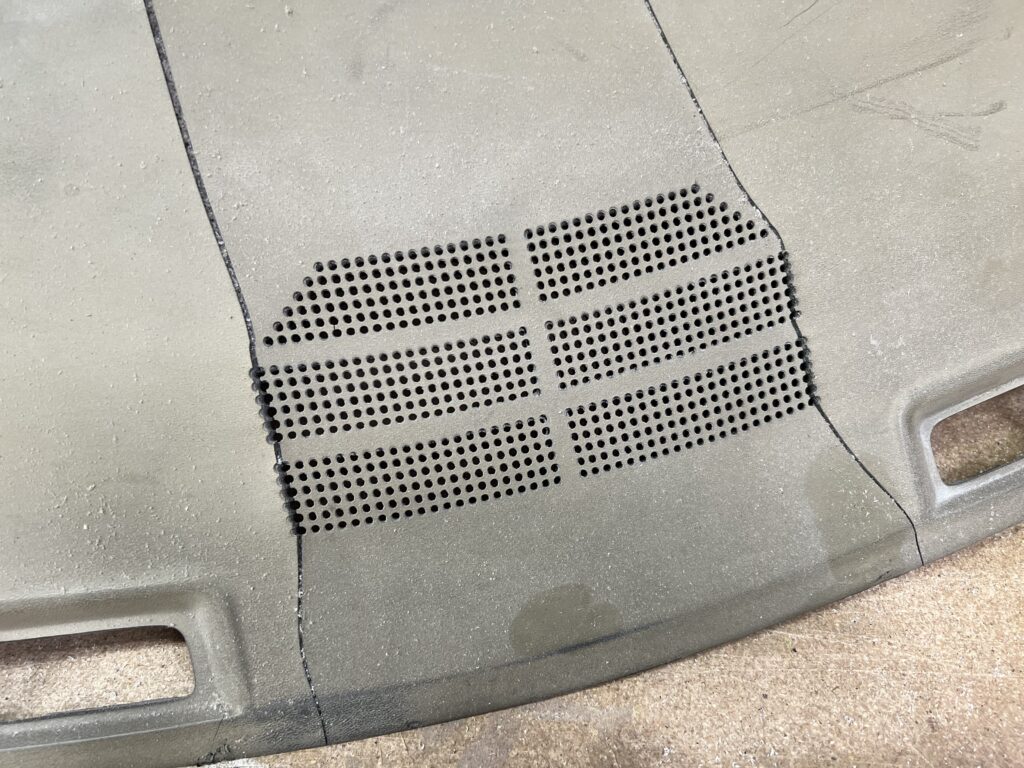
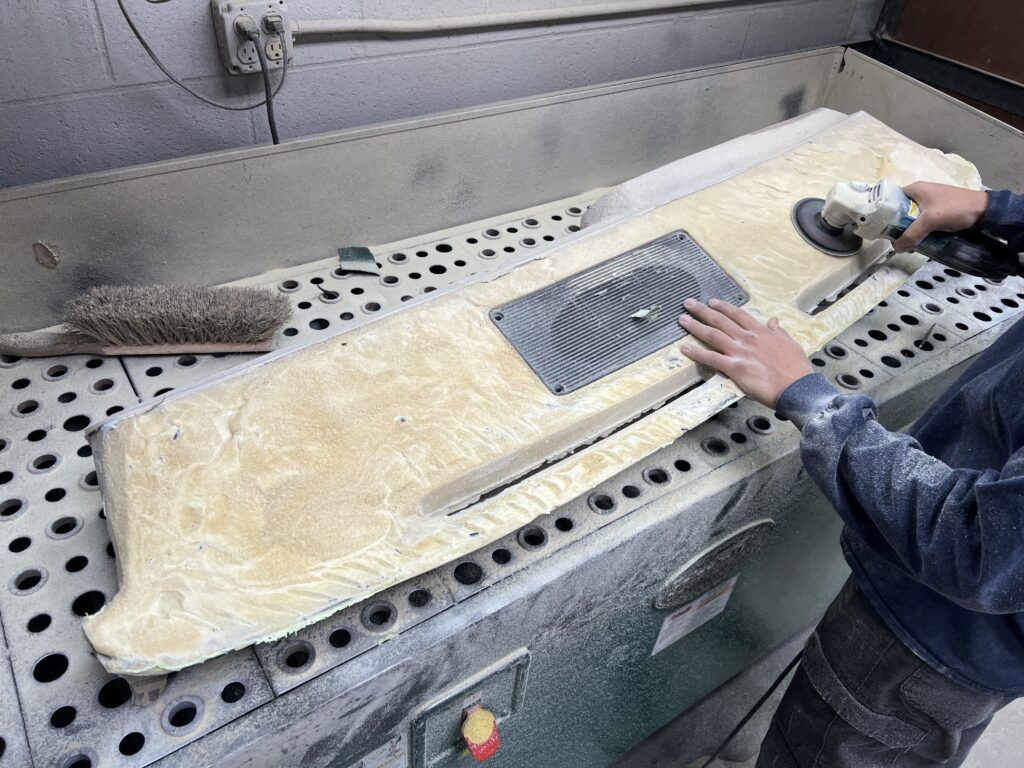
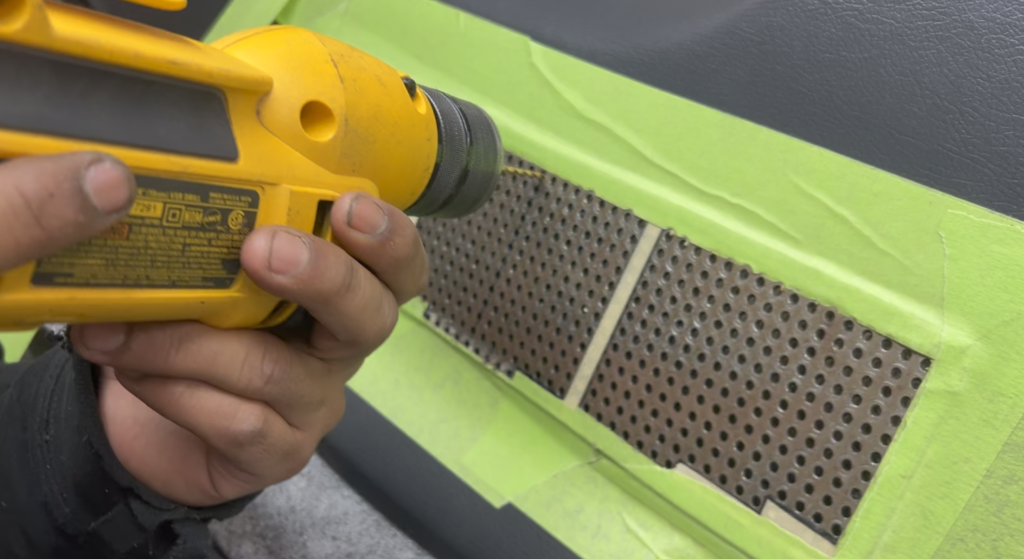
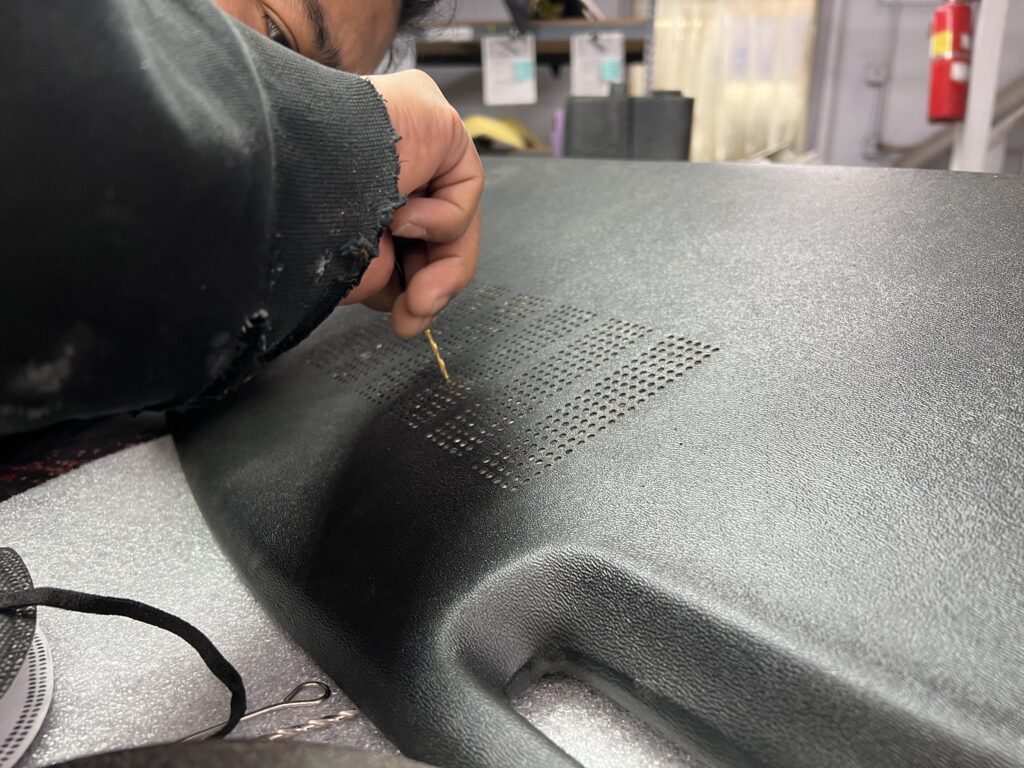

For those restoring vintage cars, preserving the original look—especially those iconic dash speaker perforations—can be a major goal. But original designs came with structural issues that led to deterioration over time.
At Just Dashes, we’ve developed a method to preserve the authentic appearance of speaker perforations while addressing the original design’s structural flaws. During the foam shaping stage of restoration, we reinforce the speaker area from the inside using industrial-grade particle board, embedding it into the dash pad for added strength.
Then, at the final stage of the restoration—after the dash has been vacuum formed and recovered—we use our custom-made speaker perforation templates to hand-drill new perforations into the reinforced section. The holes are slightly larger and spaced out more than factory original to maintain a vintage look while preventing the integrity issues that plagued earlier designs.
When customers desire, we can even fill in those speaker-perforated areas entirely. This creates a cleaner, sleeker look for the dash and serves as a customizable feature while still maintaining the integrity and originality of the dash pad.
This method gives your dash the factory-correct appearance while ensuring the speaker area is durable, clean, and sound-ready for years to come.
Have a project in mind? Contact us to discuss how we can bring your classic interior back to life—perforations and all!

This shift in speaker design is just one of the many ways automotive interiors have evolved over the decades. While today’s cars offer cutting-edge audio experiences, there’s something undeniably nostalgic about the sound of an AM radio playing through a dash-mounted speaker in a vintage ride.
Did your classic car originally have speaker perforations in the dash? Let us know in the comments!
